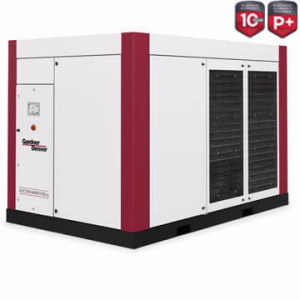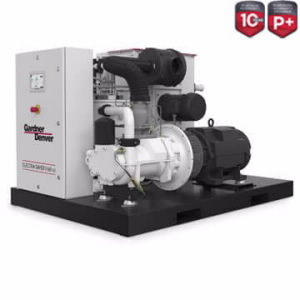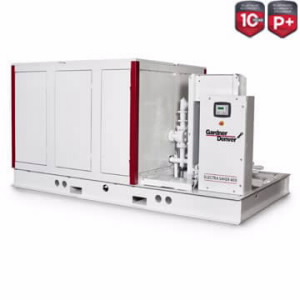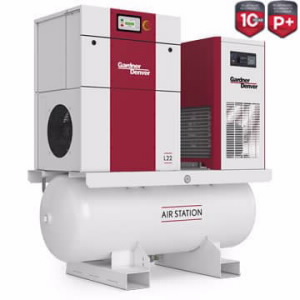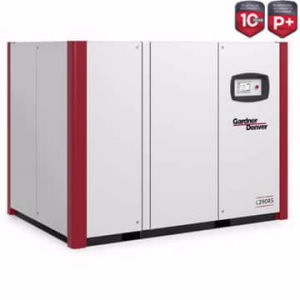Compressor Airends
The airend on a compressor package is the component that takes in the air, compresses it and discharges it to the rest of the package. Using 50 HP as an example, you can utilize a small airend (small rotor diameter), turn it at a relatively fast speed (revolutions per minute) and use about 50 HP worth of power.
Alternatively, you can make the airend larger which allows it to rotate at a slower rate while still utilizing about 50 HP worth of power. Thus, the airend size (and cost) for different 50 HP compressors will vary significantly.
It is fairly common for a manufacturer to offer a compressor with a smaller, faster rotating airend and a model with a larger, slower turning airend at the same HP because the larger airend is generally more energy efficient than the smaller airend.
Since the electrical cost of operation is the largest expense associated with operating a compressor, the larger airend is “worth the money” in many applications where power consumption is a key factor. In providing this size/speed offering in the same flow range, the customer can select the model that best meets the budgetary and operating cost targets that have been set.
Fixed vs. Variable Speed
Nearly every manufacturer offers customers both fixed and variable speed compressors in most size ranges. In general, variable speed (VS) compressors are applied when air demand varies significantly throughout a shift. This is because the VS compressors are more efficient (i.e. use less power (kW) per CFM of air produced) than their fixed speed (FS) counterparts at part load (i.e. when the air system does not need all the air the compressor could make).
Once you determine whether you need a FS or a VS compressor (or a combination), it is then most important to compare the efficiencies of the units involved. To help make an apples-to-apples comparison, most manufacturers publish Compressed Air and Gas (CAGI) Data Sheets on their website.
Be cautious in this area as many times VS compressors are recommended when they are not needed or do not project a reasonable ROI. Just because the VS compressor is the latest technology does not mean it is always the best compressor for the job.
It is important to keep in mind that many times it is best to divide the air requirement between two or more compressors. In addition to providing some compressed air if one unit goes down, a multiple unit arrangement is often the most efficient design. And, this arrangement frequently combines fixed and variable speed units working together.
Enclosed vs. Unenclosed
The enclosure or cabinet on a rotary screw air compressor serves to reduce the noise level of the compressor and to keep the compressor components inside the enclosure cleaner. Most manufacturers have taken the unenclosed compressor out of their portfolio. By making only enclosed units, the cost of the enclosure can be reduced as the volume produced increases.
However, there are many instances where an enclosure is not necessary and you are paying for something that adds no value. In many compressor installations, noise is not a concern and cleanliness is not an issue.
Additionally, maintenance is generally easier on an unenclosed unit since the unenclosed unit provides easier, unrestricted access to maintenance areas. If an enclosure provides no benefit in your installation, consider unenclosed compressors and put the money you save into another area of the business.
Single vs. Two-Stage
Two-stage lubricated rotaries compress air in two steps. Step or stage one takes atmospheric air and compresses it part way to the discharge pressure target. Step or stage two ingests the air at the inter-stage pressure and compresses it to the discharge pressure target. Compression in two stages improves efficiency, but adds cost and complexity given the additional rotors, iron and other componentry involved.
Two-stage is generally offered in the higher HP ranges (100 to 500 HP) because the improved efficiencies result in larger dollar savings when air use is large. When comparing single stage versus two-stage, it is a relatively straightforward calculation to determine what the payback will be from the more efficient but more costly two-stage unit.
Remember that the energy cost of operating a compressor is the largest expense over time, so evaluation of a two-stage machine is certainly worth a look.
 USA (EN)
USA (EN)
